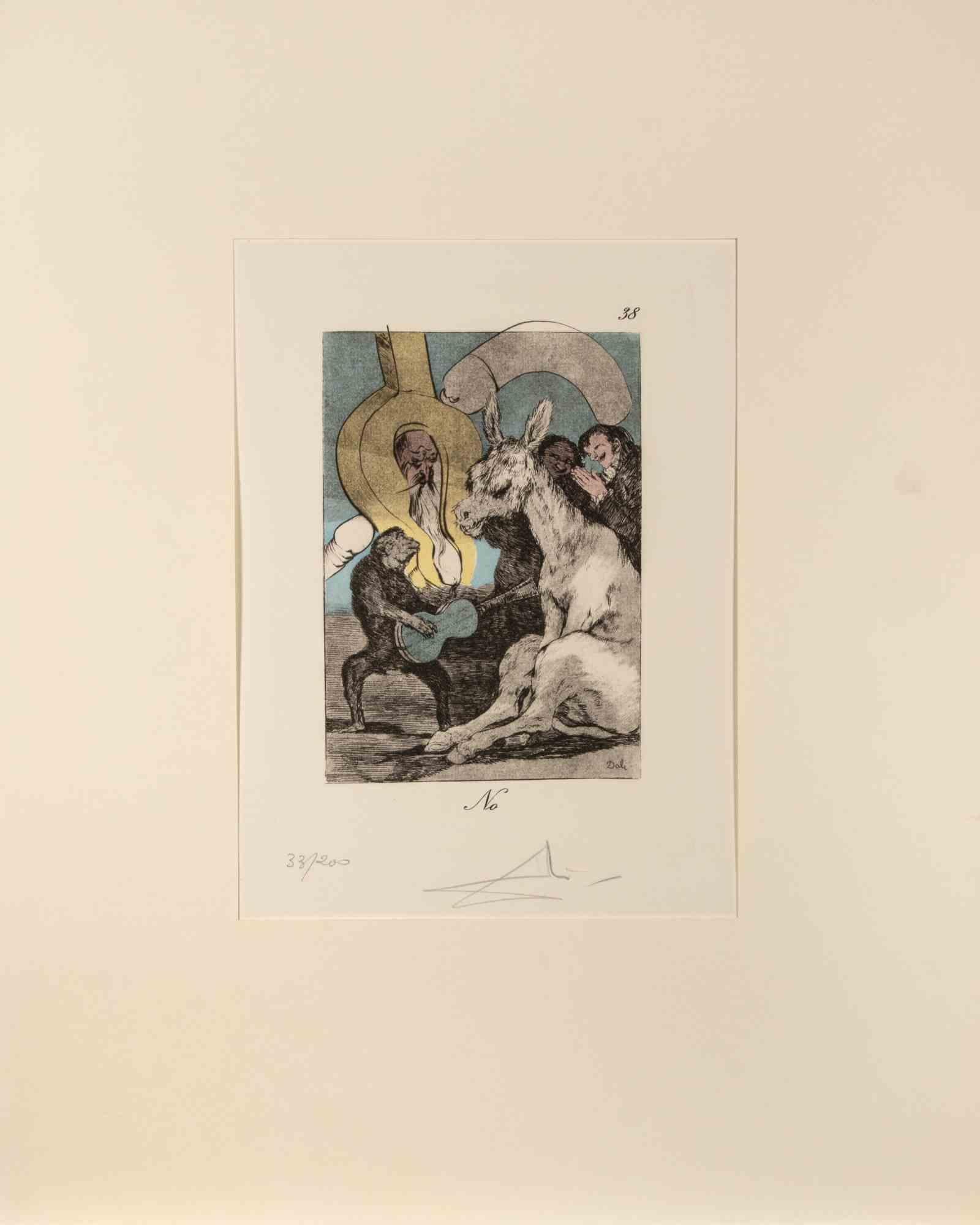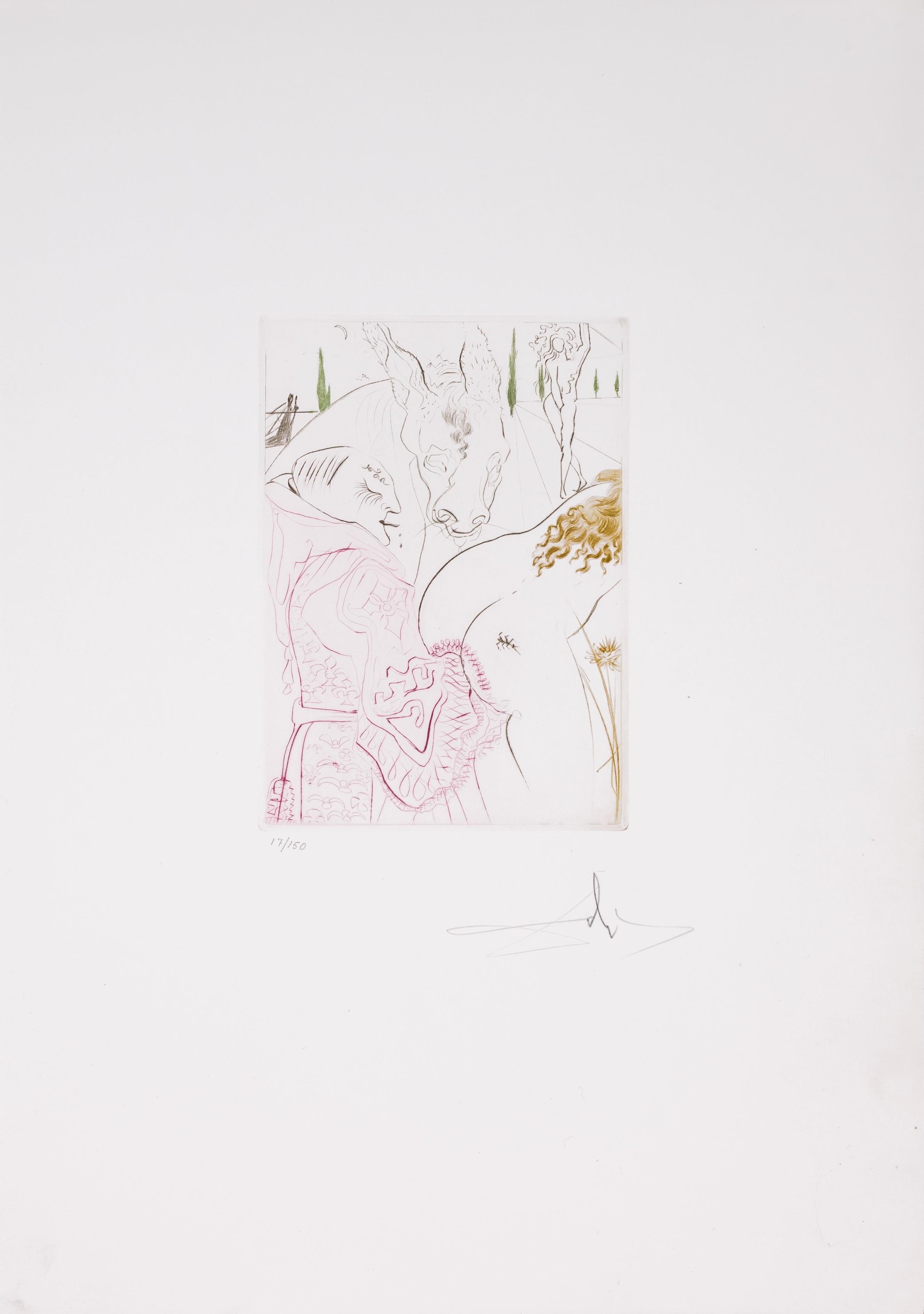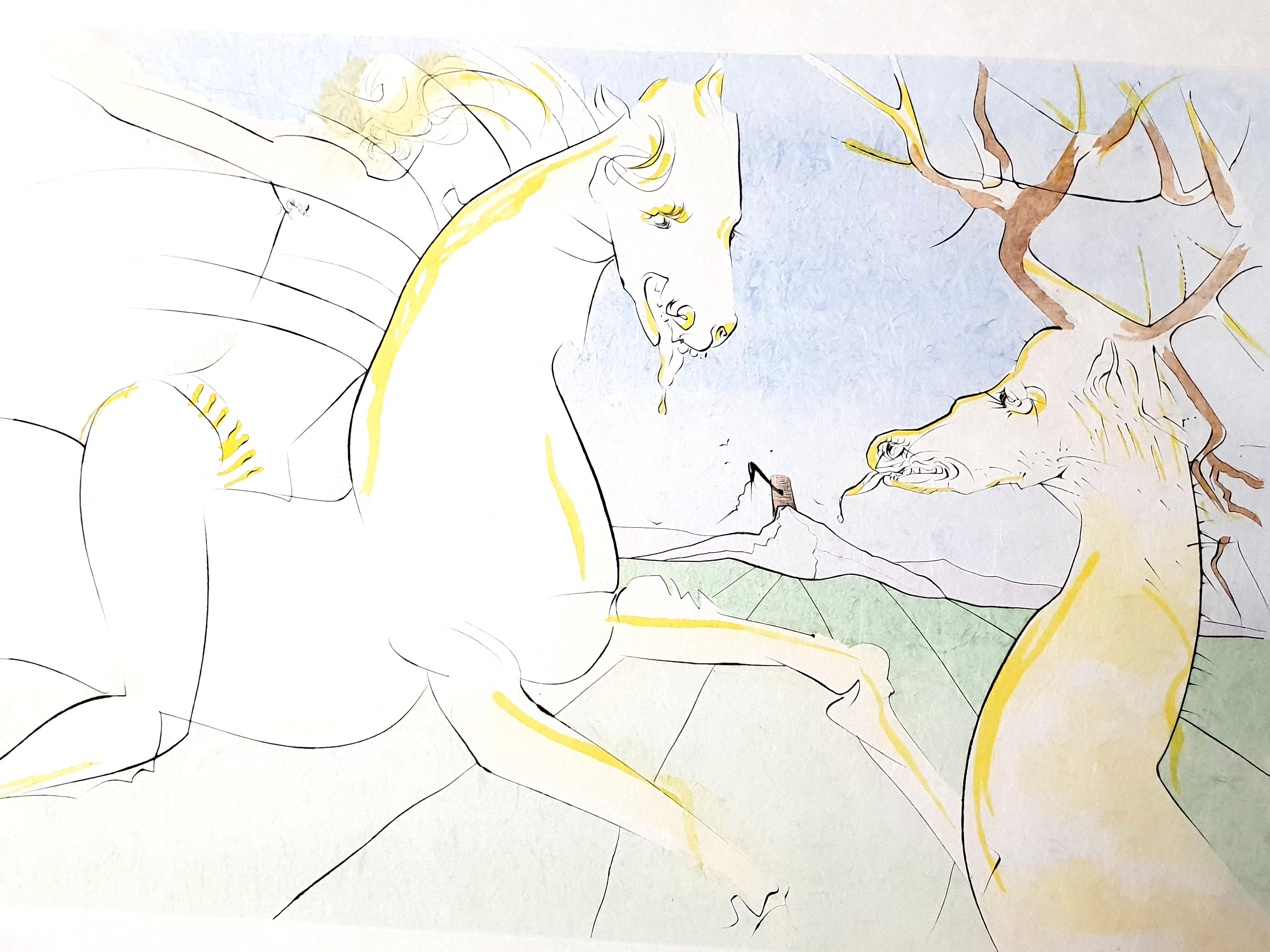Items Similar to The Web
Want more images or videos?
Request additional images or videos from the seller
1 of 6
Ray H. FrenchThe Web1950
1950
About the Item
The Web
Engraving and soft ground, 1950
Signed, titled, dated and numbered by the artist
Edition: 35 (26/35)
Printed by Master Printer, Jon Clemens, 2000
Provenance:
Estate of the artist
Martha A. French Trust
Note: Shows the artist's psychological struggles from post WWII and life as an artist
Condition: Excellent
Image: 10 3/4 x 7 1/4"
Sheet: 20 x 13 1/4";
Ray H. French: The Evolution of an Artistic Innovator
Printmaker, painter, and sculptor Ray H. French was born in Terre Haute, Indiana on May 16, 1919. Terre Haute was a cultural wasteland before the opening of the Sheldon Swope Art Museum in 1942. Thus, with a father as a coal miner and carpenter, art remained a luxury for Ray. Nevertheless, local art teachers Mabel Mikel Williams and Nola E. Williams helped to foster his creativity and unshakable drive to create things of beauty.
After high school, Ray attended the John Herron School of Art in Indianapolis. His studies there were interrupted by the outbreak of World War II, during which he developed surveillance photographs for the Army Air Force. After the war, Ray transferred to the University of Iowa on the G.I. Bill, where he received both his BFA and MFA degrees. The University of Iowa during the 1940s was a cultural mecca with many major art historians and artists. While in Iowa, Ray played an important role in this culture by becoming a founding member of the Iowa Print Group under Mauricio Lasansky.
Following his graduation in 1948, Ray experienced firsthand the rapid rise in creative printmaking in America. By 1949, he had exhibited at The Brooklyn Museum, the Walker Art Center, and MOMA New York. Ray’s early style of printmaking is characterized by pure line engraving on copper plates, a technique suited perfectly to his study of the beauty of animals. This charming and whimsical subject ran counter to the concurrent trends of Lasansky’s horrors of war and Hayter’s non-objectivity, but was equally effective in capturing the public’s attention. Walruses was purchased by the Victoria and Albert Museum, exhibited at MOMA New York and received the Arthur D. Allen Memorial Purchase Prize for its “skillful and economic use of line.” Shortly thereafter, Ray’s treatment of animals developed further into larger format mixed intaglio prints utilizing hard ground, soft ground, etching, and engraving, as exemplified in The Swan.
By the late 1950s, Ray’s style evolved into organic non-objectivity, in which he incorporated personal autobiographical vignettes and symbolism. His work during this time was further characterized by a departure from the traditional squared compositional format to his cutting and rounding of the plate to accentuate organic shapes. Ray’s 1959 Enchantment remains particularly illustrative of his use of etching and soft ground intaglio. Enchantment was successfully exhibited at the Brooklyn Museum of Art for the 12th National Print Exhibition of The American Federation of the Arts and received the Pennell Purchase Prize from the Library of Congress in 1960.
In the 1960s, Ray also started to focus on blind embossing, which he had first experimented with at the University of Iowa. He was extremely prolific and successful with this medium, selling hundreds of prints in small editions of 10 through the Associated American Artist Gallery in New York. In 1966, Ray built upon his mastery of embossing and began developing a shadow box presentation called a graphic construction that combined color, blind embossing, and multi-layered cutouts to revel intaglio compositions. Noted curator William Lieberman purchased Ray’s masterpiece graphic construction, Moon Rays, on the behalf of MOMA New York and another impression was gifted to the University of Iowa Museum of Art by Alan and Ann January in 2004.
Throughout his artistic career, Ray was also a professor and administrator at DePauw University, which occupied much of his time. Outside of his creative expression, Ray was most proud of his teaching and influencing students to find beauty in their daily lives. Specifically, he was a particularly fervent advocate of printmaking and joined the ranks of many of Lasansky’s students who went on to establish printmaking programs and departments and to further lift the stature of intaglio printmaking. During Ray’s time at DePauw, he received grants to travel around Europe. His yearlong stay in Florence led to a series of etchings, drypoints, and woodcuts of Italian and Etruscan subjects and provided inspiration for many years.
In 1984, Ray retired from his university service to work in a private studio behind his home on DePauw’s campus. After several life threatening illnesses, Ray decided to return to his early creative style of realist depictions of nature and landscape. Eventually, Ray’s health deteriorated further with the onset of macular degeneration. Legally blind, he continued to create art until shortly before his death in 2000 at the age of 80. “Sometimes when I look at a work I create, I am amazed at what inspired it. I ask myself, how on earth did I create this?” said Ray once. Ultimately, this quest to find beauty and create inspiring works of art provided the greatest source of Ray’s happiness and fulfillment, evidenced by the breadth and quality of his artistic legacy.
- Creator:Ray H. French (1919-2000, American)
- Creation Year:1950
- Dimensions:Height: 10.75 in (27.31 cm)Width: 7.25 in (18.42 cm)
- Medium:
- Movement & Style:
- Period:
- Condition:
- Gallery Location:Fairlawn, OH
- Reference Number:
About the Seller
5.0
Recognized Seller
These prestigious sellers are industry leaders and represent the highest echelon for item quality and design.
Platinum Seller
These expertly vetted sellers are 1stDibs' most experienced sellers and are rated highest by our customers.
Established in 1978
1stDibs seller since 2013
717 sales on 1stDibs
Typical response time: 1 hour
Associations
International Fine Print Dealers Association
- ShippingRetrieving quote...Ships From: Fairlawn, OH
- Return PolicyA return for this item may be initiated within 10 days of delivery.
More From This SellerView All
- Plate VI, Le Cocu MagnifiqueBy Pablo PicassoLocated in Fairlawn, OHPlate VI, Le Cocu Magnifique etching & aquatint, 1968 Unsigned as usual From the unsigned edition of 200 impressions printed on Rives BFK paper There is also a signed edition of 30 i...Category
1960s Surrealist Figurative Prints
MaterialsEtching, Aquatint
- De trace de pas de trace de…By Roberto MattaLocated in Fairlawn, OHSigned in pencil lower right Color etching with aquatint From: Monsour and Matta, Les Damnations, 1966 (11 plates, this one of 7 hors text images) Edition: 85 portfolios in the re...Category
1960s Surrealist Abstract Prints
MaterialsEtching, Aquatint
- La PromenadeBy Edgar ChahineLocated in Fairlawn, OHLa Promenade Etching, soft-ground, aquatint & drypoint, Signed in pencil lower left Published by Edmund Sagot, Paris Edition of 50 in black only, aside from the edition of 50 in co...Category
Early 1900s Art Nouveau Figurative Prints
MaterialsDrypoint, Etching, Aquatint
- XXe Siecle (Red Eyes)By Enrico BajLocated in Fairlawn, OHUnsigned as is usual for this publication From: XXe Siecle, Volume 44, 1975 Published by G. di San Lazzaro for A. Maeght, Paris Printed by Mourlot, Paris...Category
1970s Surrealist Figurative Prints
MaterialsLithograph
- CrucifixionBy Ray H. FrenchLocated in Fairlawn, OHCrucifixion Engraving, 1958 Signed, dated, titled, and annotated 'Printers Proof II' in pencil A printed by Master Printer Jon Clemens, c. 2000 A brilliant impression full of burr Im...Category
1950s American Modern Figurative Prints
MaterialsEngraving
- Bare Arms (The Practice #1)By Darius StewardLocated in Fairlawn, OHBare Arms (The Practice #1) Drypoint on Aluminum, 2019 Signed with the artist's initials (see photo) The first plate from a proposed suite of 9 drypoints, all printed in an edition o...Category
2010s Contemporary Figurative Prints
MaterialsDrypoint
You May Also Like
- "Untitled"By Nahum TschacbasovLocated in Southampton, NYOriginal artist proof engraving, aquatint, intaglio on archival paper by the Russian/American artist, Nahum Tschacbasov. Signed in pencil lower right and dated 1947. Condition: good...Category
1940s Surrealist Figurative Prints
MaterialsArchival Paper, Engraving, Aquatint, Intaglio
- "Untitled"By Nahum TschacbasovLocated in Southampton, NYArtist proof, aquatint, mixed intaglio engraving by the Russian/American artist, Nahum Tschacbasov. Pencil signed and dated lower right, 1947. Artist Proof. Condition: good; slight...Category
1940s Surrealist Figurative Prints
MaterialsEngraving, Aquatint, Intaglio
- No - Etching, Drypoint - 1977By Salvador DalíLocated in Roma, ITNo is a contemporary artwork realized by Salvador Dalì in 1977. The artwork is from the series: 'Les Caprices de Goya de Dali'. Drypoint on heliogravure, with pochoir on Rives pape...Category
1970s Surrealist Figurative Prints
MaterialsDrypoint, Etching
- Ponte de Rodillas - Etching, Drypoint - 1977By Salvador DalíLocated in Roma, ITPonte de Rodillas is a contemporary artwork realized in 1977. The artwork is from the series: 'Les Caprices de Goya de Dali'. Drypoint on Heliosgravure, on Rives paper. Plate dime...Category
1970s Surrealist Figurative Prints
MaterialsDrypoint, Etching
- Le Jument de Compère Pierre, 1972 (Le Decameron, Plate I)By Salvador DalíLocated in Greenwich, CTLe Jument de Compère Pierre from Dalí's Le Décameron portfolio is a drypoint etching with color on paper, signed Dalí lower right and numbered 17/150 lower left. From the Swedish edi...Category
20th Century Surrealist Prints and Multiples
MaterialsEtching, Drypoint
- Salvador Dali - The Rider and the Deer - Handsigned EngravingBy Salvador DalíLocated in Collonge Bellerive, Geneve, CHSalvador Dali - The Rider and the Deer - Handsigned Engraving 1974 Hand signed by Dali Edition: /250 The dimensions of the image are 22.8 x 15.7 inches on 3...Category
1970s Surrealist Figurative Prints
MaterialsDrypoint, Aquatint



